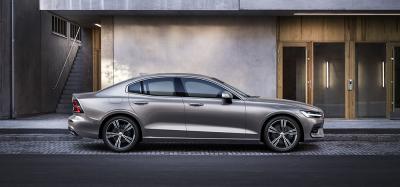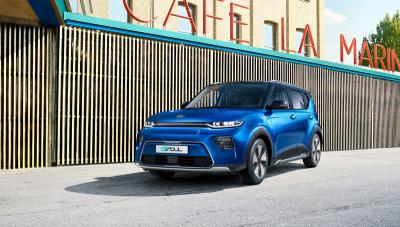Just a few centimetres longer and five doors in a single layout for the compact car that looks like a premium city car with estate-car ambitions. And with more than 600 different possibilities for personalization, you can “wear” it like a bespoke suit. This is the fourth generation of the Ypsilon family and it is packed with content, as befits a vehicle that intends to set a trend.
The DNA of this small Lancia has all the charm of a model that has been extremely characteristic since its birth – in 1985 – as the Y10, then as the Lancia Y in 1996 and then as the Ypsilon range that was presented in 2003 and revamped three years later. Twenty-six years after making its first appearance, the new Ypsilon debuted at the Geneva Motor Show last year and intends to respond to the challenge launched by the Turin group: a compact with five doors that look like three, and on some European markets (Ireland and Great Britain) with the Chrysler badge on the bonnet instead of the Lancia shield. As if to say it’s ready for the challenge, and not just on the continent.
A family compact
It looks a lot like the previous model and has the customary soft lines of its sisters Delta and Musa. On our roads since the middle of 2011, the new model isn’t difficult to recognize, even though it has the features of a race that has been well assimilated in the collective imagination. With a length of 3.84 metres, a width of 1.67 and a height of 1.52, it is positioned near the top of its category and no longer targets prevalently female users but also winks at men and young families.
The grille is bigger and, like it or not, its “old style” dominates the front and the extra body length of just three centimetres has decidedly emphasized the change in volumes by moving the windscreen forward, shortening the overhang in the front and increasing the one in rear, to the maximum advantage of the space inside. The engine bonnet, which looks suspended over the front axle, cleanly divides the horizontal section with design elements that characterize the New Ypsilon. Another example is the two rear doors, with invisible handles buried in the pillars, that are concealed by the design of the sides to give it the typical look of a three-door. Modern and technological, the headlights use bi-xenon technology (on request), and the rear lights have a LED bar that plays down any interruption in the flow of the large rear door.
Mixing-and-matching gives the personalization that is best suited to individual personalities: by mixing the three finishing levels (Silver, Gold and Platinum), sixteen exterior colours (four of which are two-tone), six different interior finishes, three engines, three types of wheel rims, and a generous package of accessories, you can have over 600 different combinations. The space inside takes profitable advantage of certain elements, like slimmer seats – they are thinner but still very comfortable –, dashboard with separate instruments, and multiple storage places. The new Ypsilon comes with unique and functional components: ABS and EBD, ESP with ASR, Hill Holder, air conditioning and front and side airbags. Optional equipment includes Gran Luce, a large glass roof panel, a 500W, 360° stereo system, set up for Blu&Me – TomTom Live touch screen navigator, parking sensors or the advanced automatic Magic Parking system that takes the anxiety out of parking by identifying the right space, even in the least accessible gap.
Leading-edge and fuel efficient
Aligned with the Fiat Panda and 500 platform, the new Lancia Ypsilon also benefits from the most updated engines offered by the group. They all have Start&Stop, units with small displacement but highly efficient and with good performance. Two petrol engines are the tried-and-tested 8-valve, 60HP, 1.2 litre Fire Evo II (also in the bi-fuel version with LPG), which gives balanced performance with moderate consumption, a declared average of 20.4 km/litre, and the multi-award-winning turbocharged, two-cylinder 900cc, 85HP TwinAir that’s more suitable for city use. It also has DFN semi-automatic transmission, which, when used with the Eco function that limits torque, will give almost 24.4 km/litre and lower emissions up to the threshold of 97 g/km of CO2. The only diesel choice is the well-known 95HP, 1.3 MultiJet with a variable geometry turbocharger and intelligent alternator, which gives the highest performance levels and is the ideal solution if you do a lot of driving. With a top speed of 183 km/h and 0 to 100 km/h in 11.3 seconds, its average consumption is about 26.3 km/litre.
Even though it has no ambitions to be a sporty saloon, the New Ypsilon’s suspension geometry gives a comfortable drive with fast, precise control in all conditions. The new front suspension with independent wheels has a McPherson layout with lighter parts, a monocoque lower arm made in a new ultra-strong synthetic material, and crossbar in thin, but very strong steel sheet. The double-block shock absorber attachment filters out more vibration while the efficient and lighter stabilizer bar has been optimized with a fixing rod instead of being directly connected to the suspension arm. The rear torsion bar suspension is the best compromise between dynamism and bulky construction which maximizes volumes and means more space inside with a useful capacity of 245 litres for the boot in the rear.
In addition to lower consumption and emissions, all versions have original equipment specific tyres with low rolling resistance to improve their dynamic properties while maintaining good grip. Standard in the Silver and Gold versions are wheels with 15” steel rims and 185/55 R15 tyres. Alloy rims are available only on the top version, Platinum, with tyres up to 195/50 R15. The more aggressive lowered wheels are only available as an optional with 16” alloy rims and 195/45 R16 tyres.
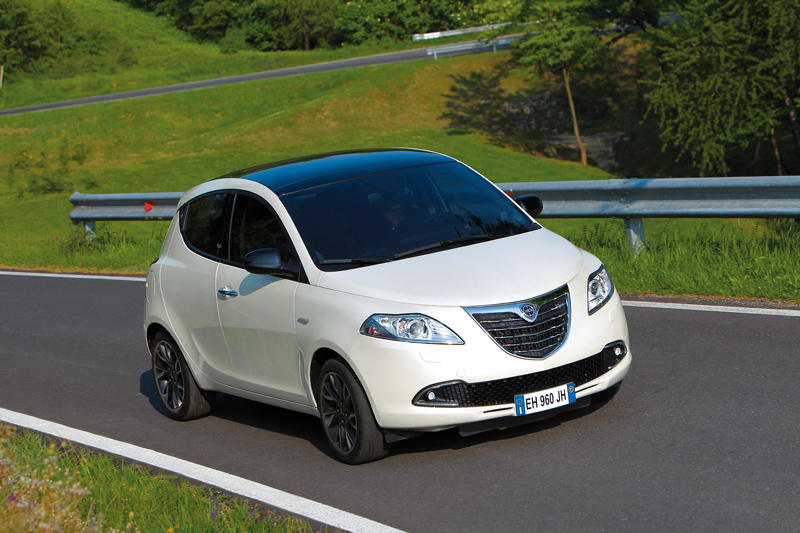
-
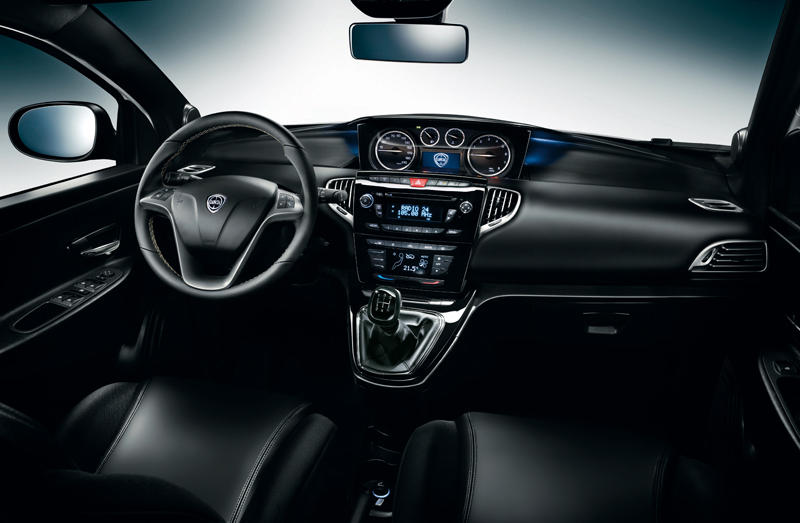
A wraparound but not unwieldy dashboard with a central instrument clutch defines the style of the interior
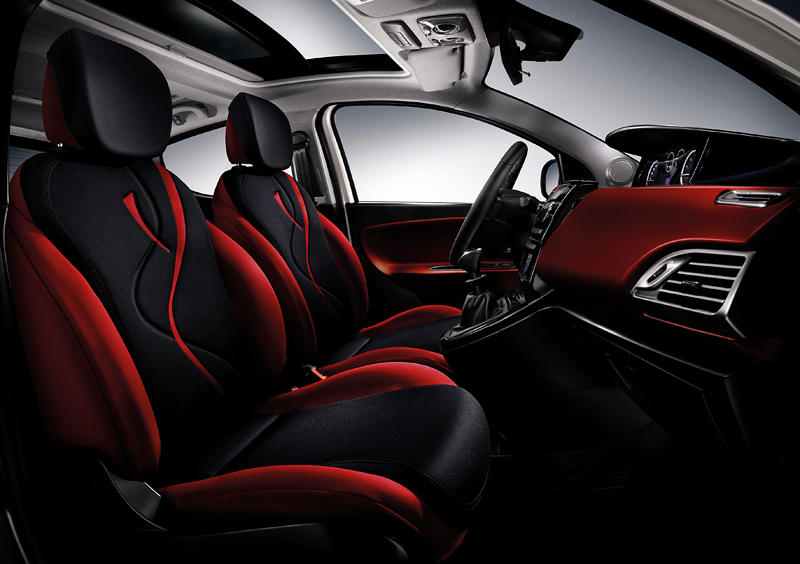
The new Lancia Ypsilon now aims at men
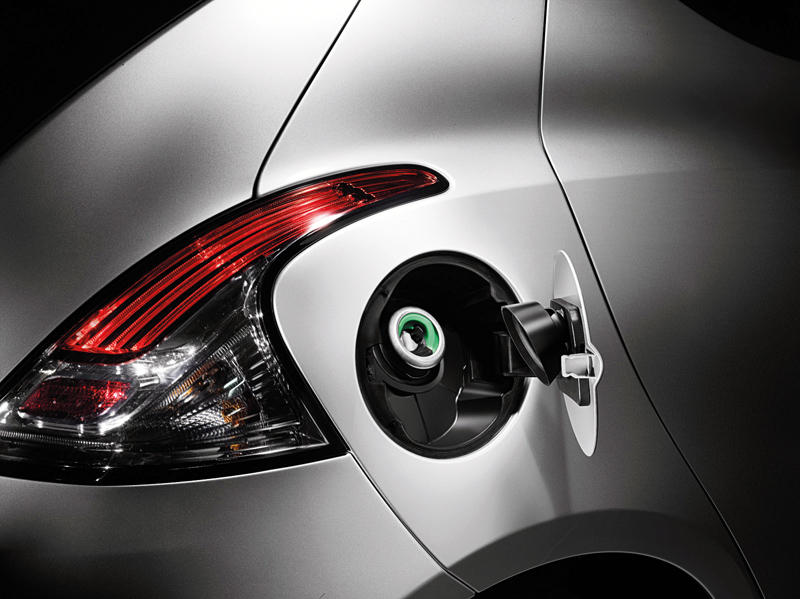
The three engines are the 95HP Multijet diesel, the new 85HP, two-cylinder TwinAir petrol and the traditional 69HP 1.2 Fire petrol engine
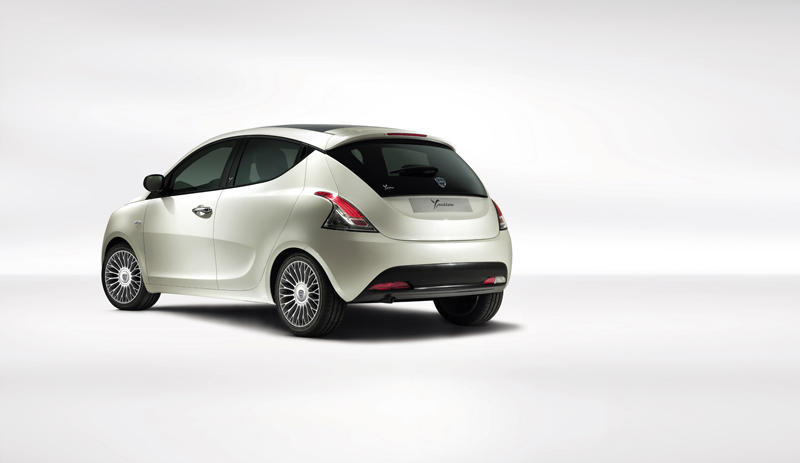
A compact with 5 doors that look like 3






